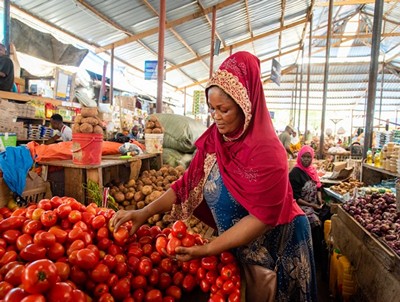State of Food Security & Nutrition in the World 2020 – Hunger & Malnutrition
Извор: WUNRN – 13.07.2020

Almost 690 million people around the world went hungry in 2019. As progress in fighting hunger stalls, the COVID-19 pandemic is intensifying the vulnerabilities and inadequacies of global food systems. While it is too early to assess the full impact of the lockdowns and other containment measures, at least another 83 million people, and possibly as many as 132 million, may go hungry in 2020. The setback throws into further doubt the achievement of Sustainable Development Goal for zero hunger.
Direct Link to Full 320-Page Report
The hungry are most numerous in Asia, but expanding fastest in Africa. By the end of 2020, the COVID-19 pandemic could tip over 100 million more people into hunger. High costs and low affordability also mean that billions cannot eat healthily or nutritiously.
This year, the report presents evidence that a healthy diet costs far more than US$ 1.90/day, the international poverty threshold. A staggering 3 billion people or more cannot afford a healthy diet. In sub-Saharan Africa and southern Asia, this is the case for 57 percent of the population – though no region, including North America and Europe, is spared. Partly as a result, the race to end malnutrition appears compromised.
The report indicated that the burden of malnutrition in all its forms remains a challenge and that while the world has been making some progress against some of the 2030 SDG nutrition targets—it has been uneven and insufficient to meet the goals. As of the end of 2019, exclusive breastfeeding only was on track for the 2025 target, stunting and low birthweight showed some progress although insufficient to achieve either the 2025 or 2030 targets, the prevalence of wasting was notably higher than the targets and achievement of the 2030 child overweight target would require a reversal of the current trajectory.
Despite some progress for most indicators, only the 2025 target for exclusive breastfeeding is on track to be achieved. Childhood overweight and adult obesity trends need to be reversed.
Key numbers
-
- 690 million undernourished or hungry people in the world.
- 840 million people are forecast to be hungry in 2030 on current trends.
- 8.9 per cent of people in the world are hungry.
- 2 billion people are unable to access safe, nutritious and sufficient food year-round.
- 750 million people are severely food insecure.
- 3 billion people cannot afford a healthy diet.
- 5 starch-only meals can be purchased for the cost of a single healthy meal.
- 97 per cent of health costs could be offset by switching to healthy diets.
- 74 per cent of gas emissions costs could be offset by switching to healthy diets.
- 132 million: the additional number of people in 2020, who could become chronically hungry, as a result of the COVID-19 pandemic.
While specific solutions differ from country to country, and even within them, the overall answers lie with interventions along the entire food supply chain, in the food environment, and the political economy that shapes trade, public expenditure and investment policies, according to the publication.



